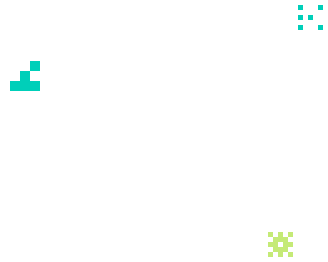


27/03/2024
Find out what multiplatform technology is, how it works and how CaixaBank Tech applies it to its strategy.
With the advancement in technology, the number of devices that we have and use has grown exponentially. Fromtablets and mobile phones tosmartwatches andsmart TVs… This poses a major challenge to companies, since the diversity of options has transformed the expectations of the user experience, which requires taking into account a wide range of interaction scenarios with customers.
Once we know which of the multiple experiences we want to offer, and have defined them, the need arises to create them, which can be done using various technologies. One of the most notable options is the use of multiplatform technologies. Why?
What does multiplatform technology entail?
Multiplatform development offers the chance to create software products with a consistent look and feel across different platforms, all based on a uniform code.
This means that the user experience can be kept consistent regardless of the device used, which results in a more efficient development process and a more familiar experience for users across different devices.
Platforms for developing multiplatform applications
Despite the large amount of environments available for developing multiplatform applications, we will highlight some of the most widely used nowadays:
> IONIC
Ionic offers solid performance for many applications, in addition to being accessible and easy to learn for developers with experience in web technologies, since it uses standard web tools and languages (HTML, CSS and JavaScript).
Ionic can be used to develop web and mobile applications.
> FLUTTER
Developed by Google, it is known for its high performance (close to that of native applications) and refined designs, despite being non-native technology.
Flutter requires learning Dart, which, despite being a relatively easy language to understand, does represent an additional learning curve. This application has extended its support beyond mobile devices to include website and desktop development, although these areas are less mature compared to other development environments.
> XAMARIN
Acquired by Microsoft, it is used to develop applications using C#. Although its popularity has gone down due to the large number of alternatives available on the market, it boasts a committed community.
Xamarin offers near-native performance and is ideal for developers with experience in C# and .NET, but it can pose a challenge to anyone not familiar with these environments.
Lastly, it allows sharing code between iOS and Android, and it also has support for desktop platforms.
> REACT
React is an open-source JavaScript library developed by Facebook. It is used to build interactive and scalable user interfaces. It is very popular thanks to its focus on creating reusable components.
Although it offers solid performance for many applications, it can have limitations in graphics-intensive tasks or with highly fluid animations. However, its ability to develop web applications allows it to be employed in various platforms with a single code base. In addition, React is relatively easy to learn for people familiar with JavaScript.
One of the major advantages that React offers is how easy it is to create Single Page Applications (SPA), but, what exactly are SPAs?
Single Page Applications (SPA), what are they and what are they for?
An SPA is type of web application that loads a single HTML page that is updated dynamically based on the user’s interactions (unlike a traditional website that loads new pages from the server).
In a Single Page Application (SPA), the user’s interactions are managed mostly through JavaScript, which can communicate with a server via APIs to fetch or send data without the need to reload the entire page.
What are the main differences between a Single Page Application (SPA) and a traditional website?

The figure shows a comparison of the two approaches to web development: the development of an SPA with React, and traditional website development. The main differences are in terms of the user experience, efficiency loading the content and the interactivity.
The left side, labelled “React SPA“, shows a dynamic and modern environment, typical of SPAs developed with React. This side of the image shows interactive elements such as buttons and forms, which symbolise the ability to update contents without having to reload the entire page. React offers a fluid and efficient user experience, with instantaneous and dynamic interface changes. The use of SPAs also offers fast content loading and updates without interruptions, which is a major advantage for the development of multiplatform applications.
The right side, with the title “Traditional Website”, shows the traditional approach to web development.This part of the image represents the process of browsing between multiple websites, where every new page or content requires the browser to be completely refreshed. This type of application involves a wait time as the pages are loaded, which highlights the more sequential and less fluid nature of traditional web development compared to SPAs.
The use of multiplatform development at CaixaBank Tech
At CaixaBank Tech, we currently use React to develop multiplatform web applications, since its focus on modular components and its ability to efficiently manage the status of the application makes it perfectly suited to build SPAs.
Every SPA is made up of different pages that, in turn, consist of components. The reuse of these elements is one of the key characteristics of React, which at CaixaBank Tech is done by means of a library of components developed by the company’s own architecture team. This library allows developers to create independent and reusable pieces of the user interface that can be easily integrated into different parts of the application.
With SPAs, users can interact with the application in real time without extended load times between pages. This is especially important for applications that require frequent data updates.
The use of this technology offers CaixaBank the possibility to create appealing products that are consistent across the multiple platforms that the company uses, the goal being to ensure the satisfaction and acceptance of the customer.
tags:
share:






